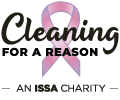Cleaning for Health: Measuring Cleanliness
In today’s fast-paced world, where health and safety have taken center stage, the significance of maintaining a clean and safe environment cannot be overstated. Among the most effective ways to ensure this is by measuring surface cleanliness, monitoring indoor air quality, and adequately storing chemicals and cleaning products. These practices are not just about maintaining appearances; they are critical components of public health, safety, and environmental preservation.
Maintaining a clean and safe environment
In the realm of facilities management, maintaining a clean and safe environment is paramount. ISSA, through the GBAC® STAR program, facilitated a workshop for the following:
- Baltimore Convention Center in Baltimore, Maryland, has a total enclosed area of 1.2 million square feet (111,500 m2) with 300,000 square feet (28,000 m2) of exhibit hall space, 50 meeting rooms, and a 36,000 square foot (3,350 m2) ballroom. It hosts over 125 events for 500,000 visitors annually. It was a notable alternate care site for COVID-19 patients run jointly by Johns Hopkins Hospital and the University of Maryland Hospital.
- Baltimore/Washington International Thurgood Marshall (BWI) Airport has five concourses with 78 gates (14 are international). It has 27.1 million passengers travel through the airport annually, and about 10,000 employees.
Our goal for this workshop was to help maintain a clean and safe environment through regular cleaning and maintenance schedules and measurement and monitoring practices.
The three critical aspects of this were achieved through a dedicated team approach by working with the following points:
- Adenosine triphosphate (ATP) meters for surface cleanliness using the Lumitester Smart and LuciPac A3 provided by Kikkoman Biochemifa Company.
- Measuring indoor air quality using the Flair IAQ monitor provided by ThinkLite Air.
- Safely and securely storing chemicals and cleaning products by leveraging the services and tools provided by the ChemLock program offered by the U.S. Department of Homeland Security Cybersecurity & Infrastructure Security Agency (CISA).
These practices are critical for ensuring a healthy and safe environment in various settings, such as convention centers, airports, hospitals, schools, offices, hotels, stadiums, arenas, and industrial facilities. To facilitate improvement, ISSA facilitates collaboration among our member companies and government agencies to engage with businesses, local business associations, chambers of commerce, economic development agencies, destination marketing organizations, and convention and visitor bureaus. One such organization is Visit Baltimore, a 501(c)(6) nonprofit that liaises between partners, customers, and stakeholders to market Baltimore as an enriching tourist destination and an ideal location for meetings and conventions.
Measuring surface cleanliness with an ATP meter
ATP meters are instrumental in ensuring the cleanliness of surfaces. ATP, a molecule found in all living cells, can be measured to assess the level of organic matter on surfaces, which may include bacteria, mold, and other microorganisms. This technology goes beyond the superficial cleanliness assessment—it provides a quantitative measure that can be tracked over time.
Why is this important?
- Health and hygiene: In environments like hospitals and food production facilities, microorganisms can pose serious health risks. Using ATP meters can help identify areas requiring additional cleaning and disinfection.
- Quality control: For industries where sanitation is critical, such as food and beverage manufacturing, ATP testing ensures that cleaning protocols are effective, thereby maintaining product safety and quality.
- Benchmarking and improvement: Regular use of ATP meters allows facilities to benchmark their cleaning effectiveness and make data-driven decisions to improve cleaning protocols.
Measuring indoor air quality
Indoor air quality (IAQ) is another critical aspect of facility management. The quality of the air we breathe indoors is just as important as the cleanliness of surfaces. Poor indoor air quality can lead to various health problems, from allergies and asthma to more severe respiratory diseases. Factors such as mold, pollutants from cleaning chemicals, and inadequate ventilation can degrade air quality.
Monitoring tools like air quality sensors can measure particle counts and particle matter concentration ranging from 0.1 microns up to 10.0 microns and profile them based on their size and danger levels; volatile organic compounds (VOCs), which also act as the carriers of harmful fine particulates, the concentration of CO2, mold, and other pollutants, allowing for adjustments to improve air quality. This can include enhancing ventilation, using air purifiers, or reducing the use of harmful chemicals.
It is essential to know that the most dangerous particles are the smallest ones capable of penetrating our lungs, which usually reside below the 0.3-micron size. HVAC filters and many purification devices are incapable of cleaning below this range; hence, monitoring for such threats and deploying the proper precautions and measures to solve for such small particulates are essential.
Why is this important?
- Health benefits: Good air quality is essential for respiratory health and can reduce the incidence of asthma attacks, allergies, and other respiratory issues. Regular monitoring can detect pollutants like germs, mold, dust, and chemical vapors, leading to early detection and prevention or timely remediation.
- Productivity and comfort: Studies have shown that indoor air quality can significantly affect cognitive function, concentration, and overall comfort, impacting productivity and well-being.
- Energy efficiency: Monitoring IAQ can also help optimize HVAC systems, leading to improved energy efficiency and cost savings.
- Smart data: Continuous air monitoring can reveal valuable insights, allowing for data-driven decision-making when evaluating cleaning protocols and processes and various technologies for air purification. Understanding events and trends that trigger harmful air quality, identifying their sources, and determining how quickly airborne threats can be pulled out of the air are critical data points for a healthier and safer facility.
Safe and secure storage of chemicals and cleaning products
The safe and secure storage of chemicals and cleaning products is crucial to prevent accidents, chemical spills, and the release of harmful fumes. Proper storage involves using correctly labeled containers, ensuring that incompatible chemicals are stored separately, and keeping hazardous materials out of the reach of unauthorized personnel, especially children. This protects individuals from potential harm and minimizes the risk of environmental contamination.
Why is this important?
- Preventing accidents: Improper storage can lead to spills, leaks, or reactions between incompatible chemicals, posing risks of fires, explosions, and health hazards.
- Regulatory compliance: Many chemicals are subject to specific storage guidelines under health and safety regulations. Proper storage is important and helps comply with these regulations, avoid fines, and ensure workplace safety.
- Environmental protection: Secure storage prevents the accidental release of harmful substances into the environment.
The U.S. Department of Homeland Security CISA’s ChemLock program is entirely voluntary. It provides facilities that possess chemicals and cleaning products at no-cost services and tools to help them better understand the risks they face and improve their chemical security posture in a way that works for their business model. In 2024, ISSA and the ChemLock program will be helping facilities with on-site assessments, guidance documents, templates, fact sheets, training, and tabletop exercises to help enhance the cyber and physical security of the chemicals being used.
Prioritize these practices
The use of ATP meters for surface cleanliness, measuring indoor air quality, and the safe storage of chemicals and cleaning products are not just best practices in facilities management—they are essential to ensuring a healthy, safe, and compliant environment. These measures protect the well-being of occupants and contribute to the overall operational efficiency and sustainability of facilities.
By prioritizing these practices, businesses and institutions can play a pivotal role in fostering environments that are not only clean but also conducive to health and well-being.





